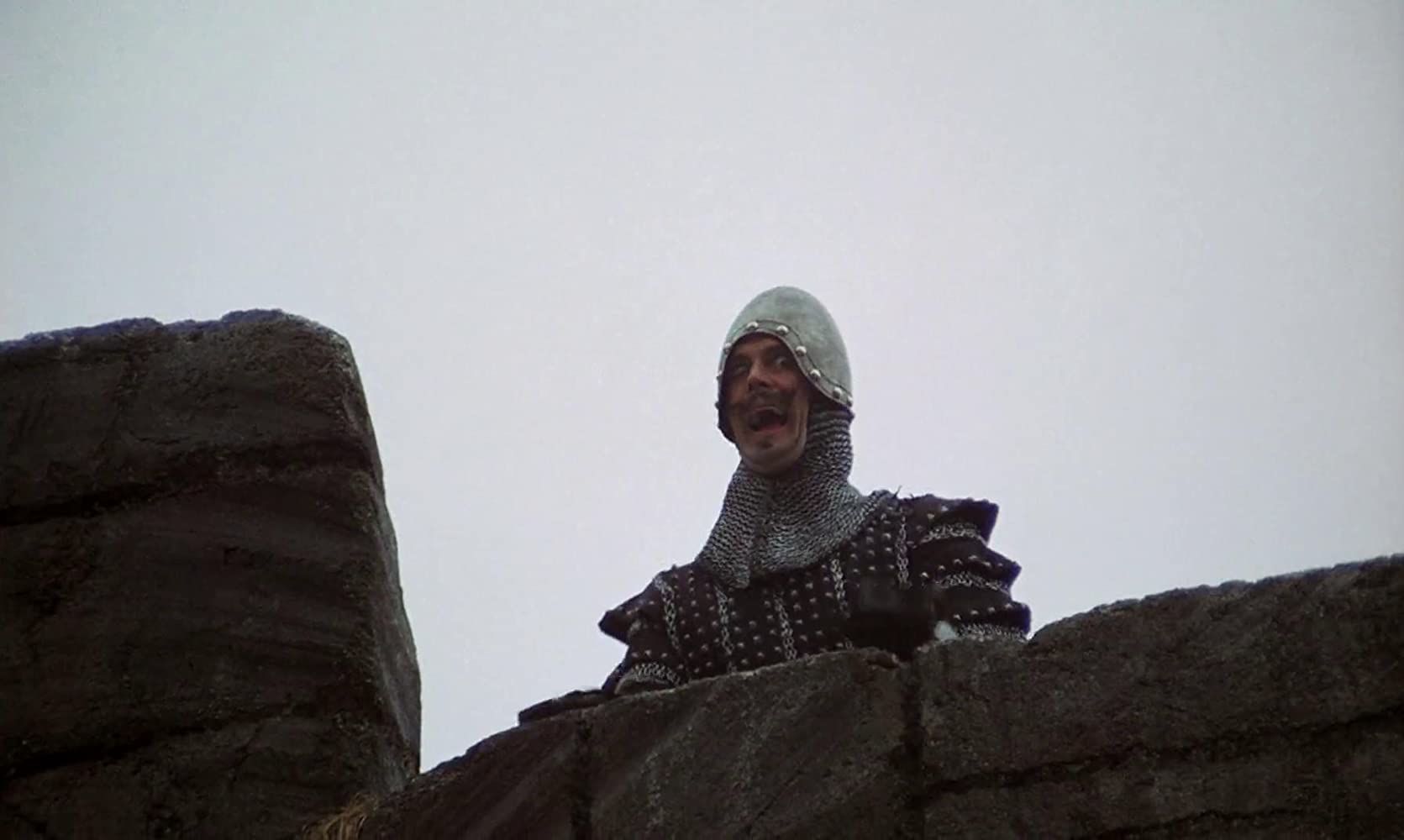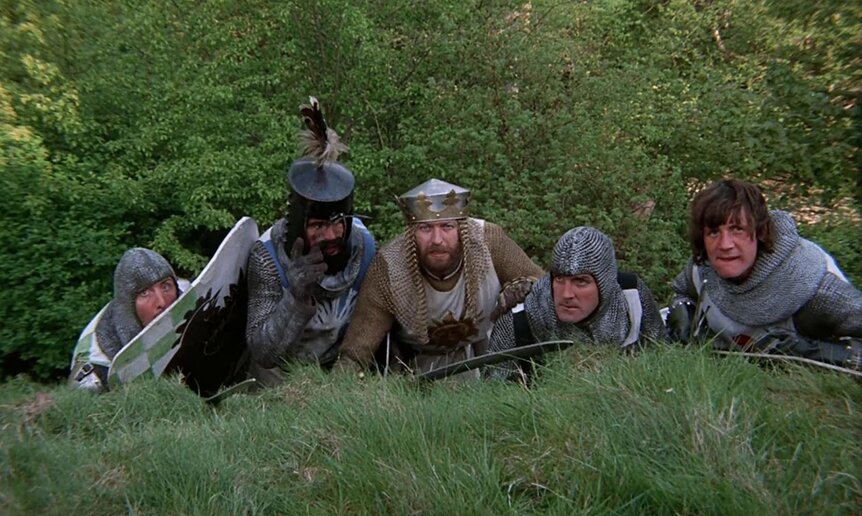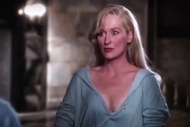Create a free profile to get unlimited access to exclusive videos, sweepstakes, and more!
45 years and the serious superpowers of Monty Python and the Holy Grail

When Monty Python and the Holy Grail premiered in the United States 45 years ago in 1975, Monty Python was not quite the household name it is today. The troupe’s show Monty Python's Flying Circus, which had run from 1969 to 1974, was familiar to savvy comedy nerds who would stay up and watch reruns on their local public broadcasting stations, but on the whole, they were relative unknowns.
Over the course of the last half-century, Monty Python went from being cult heroes to a cultural touchstone, one that changed comedy forever and influenced not just comedians, but the regular everyday people who work in I.T. or on your car. And even after all these years, we still have much to learn — and love.
I was 13 years old when I discovered Python in the form of a DVD I stole from the library, and there isn't a better age for someone to discover this group of radical, irreverent iconoclasts. I was at the age when you're mad at everyone for no reason beyond the fact that they have authority over you and seemingly like to use it. I hated that.
To this day I feel no nostalgia for that period of my life other than that this was around the time I saw Graham Chapman, John Cleese, Michael Palin, Terry Jones, and Eric Idle galloping over a hill on their white horses — the color I thought the horses would be if they'd been riding actual horses — clutching at the reins of their imaginary steeds and skipping around like children across the beautiful Scottish countryside. (To complete the image for you: Terry Gilliam trails behind them in the fog and bangs two halves of empty coconuts together to mimic the clopping of hooves.)
Looking at these ridiculous actors, I knew exactly who they were and what they were doing. It was like a lightbulb went off in my head that said, “The more seriously something takes itself, the more vulnerable it is to silliness.” And I learned that silliness can be a very sharp sword when it's in the right hands.
Holy Grail opens with Chapman as King Arthur searching for just and righteous knights to join him in his court at Camelot. On this journey, King Arthur and his knights see a crudely drawn animation of God in the sky, who sends them on a quest in search of the Holy Grail. After that, it pretty much plays out exactly the same as the medieval legend, but with the addition of silly animations, rude Frenchmen, a three-headed giant, a relentless knight who doesn't let amputation stop him, and the funniest murder rampage in the history of cinema, featuring Sir Lancelot at the arranged wedding of a reluctant prince who just wants to sing.
It was subconscious to me at the time, but their silliness slowly started shaping my taste going forward. It was absurd and anarchistic, but it wasn't as direct and confrontational in the same way as, say, the Marx Brothers were. They were no doubt just as influential as Python, but they attacked their subjects from the bottom up as the same characters each and every time. Groucho and the boys came in with costumes as characters in the lower rung of society and used jokes and sight gags to climb their way up societal ranks to decapitate the bourgeois, whereas Python infiltrated the institutions by disguising themselves as the actual people within them and dismantling it from the top down.
These are brilliant, award-winning actors clowning around instead of clowns trying to be funny. Python didn't just get into a ring and slug their opponents with jokes until they wore them out. They got into the ring disguised as referees with bombs strapped to their feet and danced around until the building exploded. I liked that. It made sense to me — and, 45 years later, it still makes sense to a lot of other people, as well.
I also liked how they toyed with the audience. Sure, Python wasn’t afraid to spoon-feed its audience jokes because silliness was the name of the game. "The Knights Who Say 'Ni!'" is good for a laugh, and so is the cow literally being hurled across the sky — outright ridiculousness was encouraged. But my favorite jokes in Holy Grail are the ones you'll miss if you're not paying attention.
In what is no doubt a reference to the medieval idea that cats were associated with witches and, more damningly, creatures of Satan, Python abused cats constantly! It's all over the place, but if you blink, you’ll miss it. If you go back and watch the classic “Bring out your dead!” scene, you'll hear a cat meowing, but if you pay close attention and avert your eyes from the action, you'll find a woman beating a cat against a wall like it's a rug.
The movie is a feline genocide.
These subtle jokes, the ones you’ll miss unless you’ve watched the film approximately 100,000 times, as I and other Monty Python lovers have, are everywhere.
The chicken painted on the shield of “The Brave” Sir Robin.
The fact that the bridge the Black Knight is guarding is over an insanely small creek and you don't really need a bridge to cross it at all. The entire fight could have been avoided and the Black Knight would have gotten to keep his limbs had Arthur just walked a couple hundred feet away to hop over it.
But it’s made all the funnier because of how seriously they take these ridiculous situations. You can tell that it is 100 percent serious to these characters in their world, and as a comedian, that is the biggest lesson I’ve learned from Python. If you take silly seriously, it becomes a kind of superpower. You can literally make a joke about anything, no matter how absurd the concept, as long as you believe in it.
As long as you’re attacking the subject with conviction, the audience will be on your side every single time.
Honestly, Monty Python’s just really good at making people happy. And even 45 years later, the importance of making people happy hasn’t changed. It hasn't aged a bit. The jokes are still just as good as they ever were, maybe even more so. This style of comedy feels more contemporary today than it did even 17 years ago, when I saw it for the first time. The late Graham Chapman was right when he said that Camelot is, indeed, a “silly place.”
And in this unprecedented time where we are stuck in our homes, maybe, for our own good, that’s what we need to help us heal: a little bit of silliness.
And so on ...
The views and opinions expressed in this article are the author's, and do not necessarily reflect those of SYFY WIRE, SYFY, or NBCUniversal.















